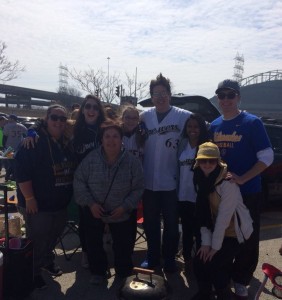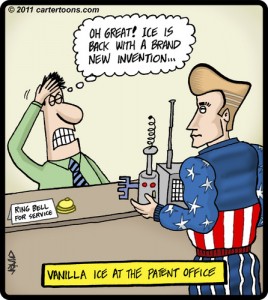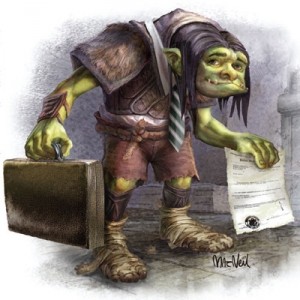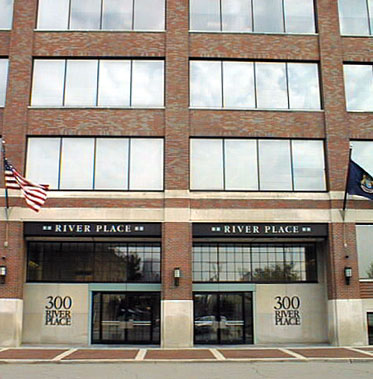A post from our student blogger Roberto
Well this is it, my final blog post to you as a member of the 2015 MSPL class at Notre Dame. When I first started writing these posts I knew very little about patent law. I knew very little about Notre Dame and I knew very little about what the future had in store for me. As the year has gone on, we have learned an incredible amount about a very specific field and we have learned just as much about ourselves. For me, the unique training at Notre Dame has been extremely rewarding given my background in mechanical engineering which is, for the most part, a broad ranging education. It is a pretty cool thing to be a part of an important and growing field that very few people fully understand.
Whenever I tell someone what I have been studying this past year I always get asked something along the lines of, “Why do you like it?” The first few months of this program I don’t think I was ever able to truly vocalize my thoughts. As a result, I gave them a response along the lines of “I think it’s really interesting and that my skill set puts me a great position to take full advantage of this career.” Looking back, I think my answer today would be a bit different.
As you may remember from my first post, my inspiration for becoming a mechanical engineer has been, and always will be, my dad, who is a self-taught inventor, businessman and everything in between. After coming up with an incredible idea he needed help protecting his work so that he could build his company. Throughout the year I have been brought back to those meetings with my dad and the patent attorney so many times. This year I have had the pleasure of working with some of the brightest and most talented minds at Notre Dame through my capstone project. Each time I worked with these men I brought myself back to that time. As I explain complicated patent issues and concerns to my inventors I have had moments where I have seen the proverbial “light bulb” go on. After a few of these moments, I realized that, in a sense, patent practitioners are just as much translators as they are practitioners. Very few inventors understand patent law and, as a result, they are completely entrusted to the knowledge and judgement of the practitioner in protecting their ideas. One skill that is extremely important, and developed over years of practice, is doing a good job explaining all of the options available to the inventors and helping the inventors achieve their goals. The practical experience that the MSPL offers in this department will go a long way in preparing us for the countless conversations we will have with inventors throughout our careers.
So what’s next for me? An awful lot, and I am going to love every second of it. I am excited to begin working for Foley & Lardner LLP at their headquarters in Milwaukee after graduation. I am thrilled to serve within the electromechanical group and I look forward to bringing everything I have to a fantastic team. It is also an incredible blessing being able to start my career in the area I grew up in which will allow me to stay near my parents, girlfriend, and close friends. I have three younger sisters still at home and being able to be there for them as they grow up and go through high school is an amazing opportunity. Another fun fact about me is that I play on an amateur baseball team near Milwaukee so it will be amazing to be able to continue playing a game I love. I have played the game since I was old enough to hold a bat. In high school I had a few key injuries that derailed my career. After forgoing the sport in college in order to focus on my education it has been revitalizing to pick it up again and I look forward to another great season. I hope to get to a few Brewers games this summer, and to a few Packers and Notre Dame games in the fall. This next year holds a lot in store for me. I will watch my girlfriend graduate with a double major from an incredibly challenging university. I will enjoy the moment with her knowing that she has made the most out of an incredible life that has taken her from an orphan in India’s largest and most impoverished city to an inspirational leader and life changing mentor for children in the classroom. I will travel down to Chicago to watch my younger brother continue to light up the stage as he plays a lead role in a major theatre production this summer. I will watch him wherever he goes and I am excited to continue to witness his transformation from high school theatre standout to movie star. I will help my oldest younger sister (wow that was difficult to put into a sentence) as she prepares to begin her own college odyssey. I will watch both of my oldest younger sisters continue to tear up the softball diamonds of Wisconsin this summer. I will run to the store to pick up baking ingredients for my youngest sister who is an aspiring chef and baker and I will enthusiastically serve as the taste tester for countless of her concoctions. To put it simply, I look forward to the many memories and good times ahead.
Now I also begin another chapter of my life. No longer am I a student, I am now a contributing member of my community. I take my responsibility to give back seriously and I am excited to have the opportunity to go back and improve my community. Throughout college I was able to volunteer through various organizations and look forward to working hard to make a difference in as many lives as possible. I have been blessed to have had the assistance of many generous people in my journey to get to this point in my life. All along I have believed that my life mission is to use my talents to improve the lives of others. Now that I am done with school that chapter officially begins.
The last part of this post is directed to the question I’m sure many of the prospective students reading this will want answered: now that I am through the program, what do I think about the MSPL as a whole? I think it has been incredible and prepared me very well for life after graduation. The real world experience the program has provided will serve us all well as we begin our careers in a few short weeks. The capstone project in the MSPL is a unique and extremely rewarding challenge for students that ties in the topics taught in all the classes into one continuous project. I think more engineers and scientists need to consider careers in patent law and that they should consider starting down that path through the MSPL. The MSPL gives students incredible training that would be difficult for students to duplicate in any other setting. In addition to the training, there are many opportunities to immerse yourself in the patent law community. From guest lectures to office visits in San Francisco and Washington, D.C., students are brought into this community through the many experiences available through the MSPL. Another advantage of the MSPL is that students are trail blazers, forging a new path on their journey from engineers and scientists to the patent practitioners of tomorrow. It is rewarding to be on the cutting edge of such an important field and to be a part of an educational revolution. The final benefit is that students are welcomed into the Notre Dame family. At first, I thought this was a fluffy benefit people just talked about but that in reality meant very little. I was very wrong. Being on campus and talking to plenty of alumni I have realized that there truly is a Notre Dame family and that it is a special thing to be a part of. It will be special to belong to a group as close knit as Notre Dame’s and I look forward to interacting with more and more alumni in the coming years.
Well, I guess it’s about that time. This is it, my final MSPL goodbye! Thank you for reading my posts and the posts of my fellow MSPL bloggers, Megan and Catie this year. It has been an honor to share my experiences and I hope that they have shed some light on what life is like being a member of the MSPL at Notre Dame. I would be more than happy to talk in more detail with anyone about my experiences and can be reached at the below correspondence or through my LinkedIn profile.
Go Irish!
-Roberto
Email: fernandezr519@gmail.com
LinkedIn



